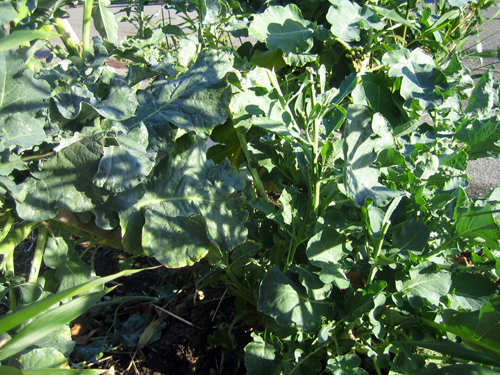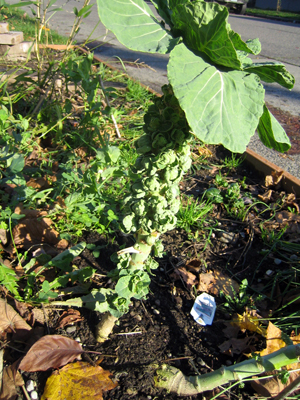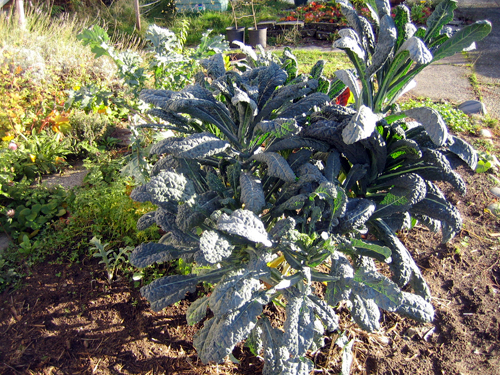Had enough brown sugar and butter for a while? Perhaps as a reaction to the pervasive Pacific Northwest chill, my hosts this year up in Seattle got serious about their meats and starches. At the center of the menu was a 28-lb turkey, lacquered glossy brown through a simulated pit-cooking in the Weber grill, paired up with a huge, lavishly home-smoked ham glazed purple with marionberry jam and bourbon. Alongside were plain mashed potatoes, garlic mashed potatoes, and horseradish mashed potatoes; "more butter than yams" casserole of sweet potatoes whipped with nearly their weight in brown sugar and butter and topped with marshmallows; plus sage-and-chestnut stuffing, all of it awash in lakes of turkey and ham gravy.
Standing on my California rights, I insisted on adding the wonderful autumn salad found on the menu at Bay Wolf a decade ago, and on the table of wherever I've been having Thanksgiving ever since. A vivid toss of arugula, oak-leaf lettuce, sliced Fuyu persimmons, pomegranate seeds, crumbled chevre, and sweet-spicy pecans, it makes a lively antidote to all that beige stuff. (The exact recipe can be found in the excellent Bay Wolf Cookbook, a must-have for seasonally-minded Bay Area cooks.)

But after a few days of turkey sandwiches and the remains of the stuffing, what I was craving was greens: tough, raincoat-textured winter greens, steamed to tenderness and tossed with lemon and garlic and hot pepper flakes, bright with B vitamins and minerals with just an edge of bitterness.
Happily, this is their season. While you can grow all the brassica family year-round, they do best in the cool, moist weather of a Bay Area winter. In the brassica family (formerly known as the crucifers, for their cross-shaped stems) are all the cole crops: cabbage, cauliflower, kale, collard greens, mustard greens, broccoli rabe, lacinato (also known as cavelo nero, black, or dino) kale, Brussels sprouts, kohlrabi, and more. They are even better after a frost, when the plant produces a naturally sweet "antifreeze" to keep from the water inside its cells from freezing. Hot weather stresses the plants, and makes them more susceptible to disease and pest pressure. In cool, even cold weather, though, they thrive.

